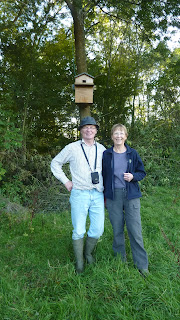Back up to Troon. Possibly for the last time.
Life, of course, is a beach. Or is it a fridge?
Anyway, in an ongoing struggle to provide enough electricity to keep our Albatross' fridge cool, I spent a joyous day installing a new charging gadget. I'm not exactly sure what it does or even how but it has lots of wires in and out of it and many flashing lights. When none of the lights flash, it probably isn't working. Anyway, I think it probably is now.
We also fitted the new (and possibly soon to be famous) life raft box and rigged the genoa without much difficulty.
Next day Al arrived. This was a good thing.
We had a "Farewell Troon" final supper at Scott's and settled down to some serious passage planning over a very small bottle of wine.
Our plans were clear, orderly and definite. Troon to Campbeltown to somewhere in Ireland and so on. Jean phoned Campbeltown. They were shut.
We changed our plans Definitely then to Rathlin Island or to Ballycastle.
So on Tuesday 17th March we set sail for Sanda.
It is very important to remember to turn the fuel back on before motoring out of a harbour.
Sanda Island (population 1) has a surprising and very good anchorage.
Although it was 1600 when we arrived, it was bright and sunny.
We anchored.
Anchored off Sanda
It is very important to test the anchor windlass before first using it in earnest at the start of the season.
Next day, to Rathlin Island.
The new marina is good although the approach to it was shallow.
The windlass skillfully repaired by Al and me only yesterday had found a second reason not to work.
Although the three of us have more qualifications in Biologically related scientific subjects than a school of emperor penguins, this is of absolutely no use when trying to fix a windlass. Windlasses need electricity and this was absent. My helpful crew went for a walk. I fixed the windlass and joined them.
Rathlin Island Marina
We had a very nice walk.
Rathlin Island Lighthouse
We were "the first boat in (this year)" at Rathlin. Of course. The nice marina man charged us only £5 in recognition of either our hardiness or possibly our stupidity.
Passage planning around Rathlin Island is all about tides.
We left at 0600 with 6 knots of tide behind us and 8 knots of wind and motored all the way to Glenarm.
Glenarm is welcoming
Glenarm Marina is secure
At Glenarm, the very nice Marina Manager (having noted that we were "the first boat in") suggested a very nice walk in the forest (with an opportunity to see a red squirrel) followed by a walk around the town and up to the castle. Al explained all the history to me. I pretended to understand bits of it.
A nice fungus. (Note absence of squirrels).
The very nice Marina Manager even contacted his friends in Belfast Marina and gave us useful tips on how to get there safely (by sea). We like Glenarm, the black guillemots, the harbour, the town, the forest, the free washing machine and the marina manager.
Black Guillemots
20th March 2015.
We had a lie in as we didn't need to leave Glenarm before sunrise.
We left at 0700.
We motored most of the way to Belfast.
As we entered Belfast Lough there was a 95% eclipse of the sun with a rainbow at the same time.
Why does the wind drop so much during an eclipse? We biologists had no idea.
Belfast marina.
We were "the first boat in". However because the marina is manned by a robotic ticket dispenser that couldn't speak, we had to congratulate ourselves, ourselves.
Belfast Marina is very good. £16 per night to include electricity, showers, a washing machine and the occasional eclipse. We had a walk to the Titanic Centre. This was, indeed, quite large. Much of the commerce and tourism of this part of Belfast now revolves around the Titanic and the story of its sinking. Unfortunately (for Belfast) it proved impossible to make a sequel to the film of that name.
The Titanic Centre
We had two nights in Belfast and some fine food.
I slept as much as possible.
It is important that the skipper gets enough sleep, such is the burden of command, etc.
Next to Arglass where it rained a lot in 2012 (for further details please read my blog).
We had a nice Chinese Meal in Ardglass.
We sailed some of the way to our next port. This is unusual for us.
"Howth" is pronounced "Hoa't".
It is important to know where you are going when you enter Howth Marina.
Is this the way in or out?
I think not.
We had 4 nights in Howth. Howth is posh suburban Dublin. The Dulwich Village of Dublin (except that is almost an island and has a huge fishing fleet).
We had a very nice but rather long walk in Howth but spent most of our three days there worrying about the weather and where (exactly) to go next.
Al took us out to yet another lovely meal before leaving (by air) for Newcastle.
It really doesn't matter how many different weather forecasts you study when the weather is foul, the weather remains foul.
We considered
1. flying home
2. buying a camper van and driving to Spain
3.flying to Spain
4. all of the above at the same time
5. sailing to Arklow
6. Sailing to Milford Haven.
Eventually we sailed to Holyhead.
Holyhead is a "Harbour of Refuge". This is a good thing.
Holyhead Marina
A harbour of refuge (looking outwards)
We like Holyhead.
I had a little more sleep and eventually we caught the train back to Essex.
Bonzo was, of course, delighted to see us.

















































